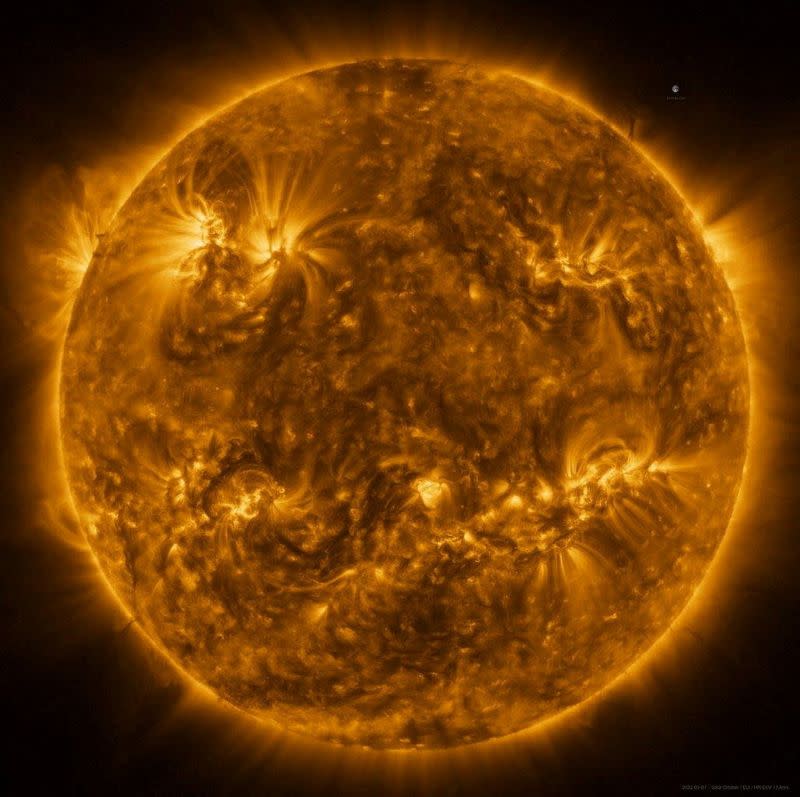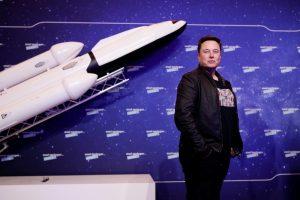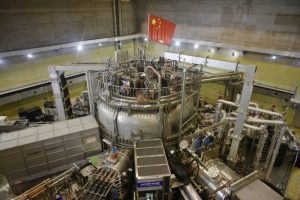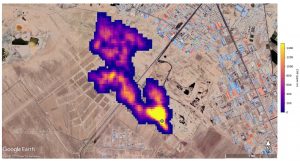India’s space agency launched a rocket on Saturday that aims to “park” in a space orbit, after a journey of over four months, about 150-million kilometres from Earth, to study the sun.
In its latest space venture, New Delhi is attempting its first solar mission, barely a week after India’s successful landing on the moon.
A live broadcast on the Indian Space Research Organisation’s (ISRO) website showed the rocket leaving a trail of smoke and fire as scientists clapped.
The broadcast was watched by more than 860,000 viewers, while thousands gathered at a viewing gallery near the launch site to see the lift-off of the probe.
ALSO SEE: ‘Local Protectionism’ Slowing China’s Clean Energy Transition
Four-month journey to ‘parking lot in space’
India’s space agency said later, on social media platform X (formerly Twitter) that the satellite was in orbit, awaiting a further journey to Lagrange Point, from where it will study solar winds that can cause disturbance on earth, commonly seen as auroras.
The Aditya-L1 spacecraft, named after the Hindi word for ‘the sun’, took flight a week after India beat Russia to become the first country to land on the south pole of the moon. While Russia had a more powerful rocket, India’s Chandrayaan-3 out-endured the Luna-25 to execute a textbook landing.
Prime Minister Narendra Modi is pushing for India’s space missions to play a larger role on a world stage dominated by the United States and China. Home Affairs Minister Amit Shah, on social media platform X, said the launch was a “giant step” towards Modi’s vision.
The Aditya-L1 is designed to travel 1.5 million km (930,000 miles) over four months, far short of the sun, which is 150 million km from earth. It aims to stop its journey in a kind of parking lot in space, called Lagrange Point, where objects tend to stay put because of balancing gravitational forces, reducing fuel consumption for the spacecraft.
Mission will study space-weather, solar radiation
“We have made sure we will have a unique data set that is not currently available from any other mission,” Sankar Subramanian, the mission’s principal scientist.
“This will allow us to understand the sun, its dynamics as well as the inner heliosphere, which is an important element for current-day technology, as well as space-weather aspects,” he added.
The mission also has the capacity to make a “big bang in terms of science,” said Somak Raychaudhury, who was involved in developing some components of the observatory, adding that energy particles emitted by the sun can hit satellites that control communications on earth.
“There have been episodes when major communications have gone down because a satellite has been hit by a big corona emission. Satellites in low earth orbit are the main focus of global private players, which makes the Aditya-L1 mission a very important project,” he said.
Scientists hope to learn more about the effect of solar radiation on the thousands of satellites in orbit, a number growing with the success of ventures like the Starlink communications network of Elon Musk’s SpaceX.
“The low earth orbit has been heavily polluted due to private participation, so understanding how to safeguard satellites there will have special importance in today’s space environment,” said Rama Rao Nidamanuri, head of the department of earth and space sciences at the Indian Institute of Space Science and Technology.
Longer term, data from the mission could help better understand the sun’s impact on earth’s climate patterns and the origins of solar wind, the stream of particles that flow from the sun through the solar system, ISRO scientists have said.
Pushed by Modi, India has privatised space launches and is looking to open the sector to foreign investment as it targets a five-fold increase in its share of the global launch market within the next decade.
As space turns into a global business, the country is also banking on the success of ISRO to showcase its prowess in the sector.
- Reuters with additional editing by Jim Pollard
ALSO SEE:
India’s Chandrayaan-3 Makes Historic Landing on the Moon
India’s Chandrayaan-3 Moon Mission Shares Historic Photos – BBC
China’s Next-Gen Rocket Could Take 7 to Moon, Space Station
China Soars Ahead of SpaceX in Methane-Liquid Rocket Race
Japan Plans to Beam Solar Power From Space by 2025 – engadget
China’s Low-Earth Satellites Push in Starlink Catch-Up Bid
Elon Musk’s Starlink to Connect With Planes, Trucks, Ships
China May ‘Need to Destroy’ Musk’s Starlink – SCMP
China Fears US Will Use SpaceX to Bring Calamity to World
























